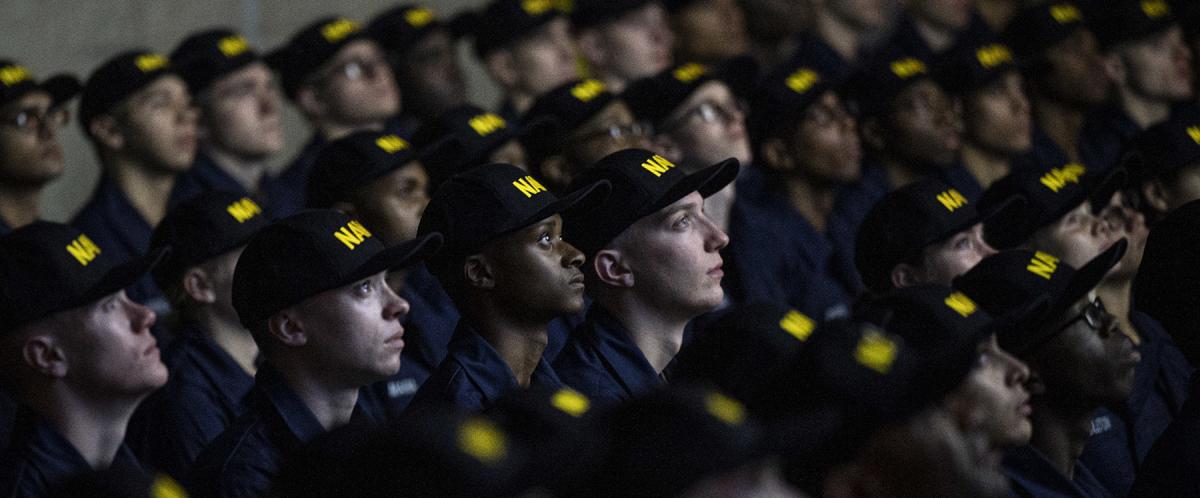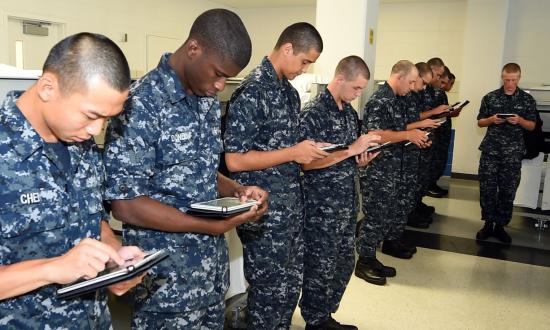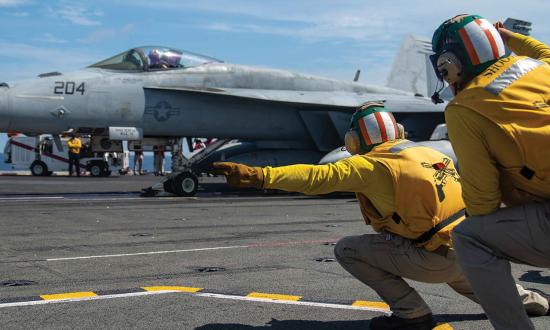Aristotle, writing in the 4th century BCE, noted that the young people of his day were “unable to resist their impulses” and “cannot bear to be slighted, but they are indignant when they think they have been wronged.” The philosopher laments that the young are naïve, having not yet “experienced want” or “witnessed much wickedness.” They are, he says, “high-minded because they have not yet been humbled by life,” and as a result “live more by the rule of moral character than by that of calculation.”1
Add a mobile phone and a TikTok account to the mix and Aristotle’s youth would be mostly indistinguishable from the current caricature of today’s so-called Gen-Z.2 But is this a true and fair assessment?
Assessing Gen-Z
Scholars, including Stanford University’s Dr. Roberta Katz, would only partially agree. It is indeed true that this generation is driven “more by the rule of moral character,” but Katz and her fellow researchers have also found that Gen-Zers are “self-driver[s]” who favor a rational and informed approach to problem solving.3 For Katz and others, Gen-Z is a “highly collaborative cohort” which “has a pragmatic attitude about the work that has to be done to address” important global issues.
Such insights are important to the armed forces community as Gen-Z comprises virtually all junior enlisted personnel and a significant share of junior officers, not to mention nearly the entire current recruiting pool. From a manning perspective alone, Gen-Z is critical to the military’s mission. Recent analysis by the Council on Foreign Relations demonstrated that some 70 percent of enlisted Marines are aged 24 or younger. For the Navy, that statistic stands at slightly over 40 percent, a number roughly mirrored within the Army and Air Force. While enlisted Coast Guardsmen tend to be a bit older, roughly 30 percent of the service’s enlisted force is 24 or under. In November 2022, Marine Corps Commandant General David Berger addressed significant shortfalls in recruiting and wrote that “Fixing the problems will require . . . innovative approaches and messaging.” We agree.
Put simply, without buy-in from Gen-Z, the U.S. armed forces cannot achieve its strategic goals. Like Aristotle’s caricature of youth, many older Americans today persist in believing that Gen-Z lacks the tenacity, grit, and drive to engage the enemy in a potential combat situation.
The Will to Fight
However, Gen-Z has already proven it is willing to fight for important causes. On issues of national and global significance (for instance, climate change or racial injustices), Gen-Z has mobilized and taken the lead. A recent report by the BBC noted that while “activism has long been synonymous with youth culture . . . this cohort appear to communicate, mobilize, and rally support in way that sets them apart from generations before.”
Activism, of course, is considerably different than warfighting. However, the question that the armed forces must wrestle with is not whether Gen-Z possesses a fighting spirit but how to tap into it and apply it to the military mission. To do that, the armed forces must help Gen-Z to establish a clear link between their service and the betterment of the world.
This is not a new proposition. Service members have always been motivated by a desire to contribute toward peace and global security. However, this generation is unique in that it wants to clearly understand—in a pragmatic and transparent manner—what, exactly, that contribution is. Professor Katz notes that members of Gen-Z “are pragmatic and value direct communication, authenticity and relevance.” Put simply, Gen-Z wants data, not jargon.
Unfortunately, this is where the armed forces are missing the mark. While the military can sell Gen-Z on the benefits of service, it has struggled to communicate the tangible ways in which military service is, or will, contribute to global peace and security. Gen-Z servicemembers are told that their evolving missions relate to vague terminology such as “great power competition.”
This generation did not live through the Cold War, and—if they were even born—were only small children when 9/11 took place. Gen-Z has come of age surrounded by easy access to robust information from a variety of sources. Expressions such as “great power competition” do not have the same emotional or intellectual resonance that they may have for more senior generations. In a 2019 Atlantic article, Uri Friedman writes that phrases such as “great power competition” have become almost meaningless cliches. Other sources note that the phrase loses substance because the military itself speaks of it in such inconsistent terms.
Writing in a piece for the Modern War Institute at West Point, Captain Alexander Boroff, U.S. Army, notes that warfighters “must train to fight with a clear understanding of the strategic environment. The disarray caused by the failure to explicitly conceptualize great power competition is most clearly evident here.” In other words, young service members (and potential service members) are confused about what “great power competition” is and how it impacts global peace and security. The lack of understanding undermines this generation’s appetite to fight.
A similar sentiment was raised in a 2020 Proceedings article on submariners by Ensign Kyle Chiang, suggesting that if the submarine force wanted to recruit and retain top talent, it would need to connect submariners to the “bigger war-fighting picture.” The author noted that “the why that future leaders seek is to know the impact they will make on their subordinates and in serving their country.” The same is true for the wider Navy, and the profession of arms more generally.
Boroff and Chiang, both junior officers at the time of their publications, understood that Gen-Z can and will fight. But first, they need to understand why that fight is necessary. The Navy and the armed forces at large would do well to take a page from the climate change movement which has successfully motivated and mobilized members of Gen-Z. The armed forces need to better tell the story of what great power competition is, why it matters, and how military service contributes to a more peaceful and just world. Military services need to share statistics and data, as well as stories of human impact.
No Need to Reinvent the Wheel
The good news is that the military already has the tools to do this. Public documents such as the National Security Strategy are designed to capture the strategic risks associated with revanchist global powers such as China and Russia, as well as other key threats to global security.
True, Gen-Z has free and open access to these documents—as do all Americans. Both maturity and professional interest should compel them to read them of their volition. However, the absence of this information at all stages of their military journey causes them to be seen as little more than peripheral knowledge and suggests that the military does not prioritize the underlying assumptions about the global political landscape. If something is important enough to shape national defense strategy, it ought to be taught to all military personnel.
Silence can speak volumes. If the services do not share and discuss strategic context, it sends a message that it is not important. The Navy—and indeed the wider profession of arms—should seek to integrate this information more clearly into all primary areas of warfighter development. Doing so would likely bolster recruiting, enhance retention, and elevate motivation.
Recruiting
Gen-Z members strongly consider potential employers’ global impacts when making employment decisions. A study by Deloitte Consulting suggested that while Gen-Z certainly considers issues such as salary in employment decisions, they are almost equally concerned with their potential employers’ ability to “demonstrate their commitment to a broader set of societal challenges.” In a word, Gen-Z wants to understand the impact of their work. They want to understand that they are contributing to real change.
Pay and benefits may motivate young people to join the military. However, it is the ability to connect with a deep sense of purpose that retains and motivates them.
An effort is, indeed, being made to connect recruiting to the interests and concerns of Gen-Z. For instance, the Navy’s primary recruiting website includes important and prominent sections on the Navy’s diversity and inclusion efforts as well as practical career matters. The website is highly transparent, for example, about pay expectations—it even offers a remarkably straightforward pay chart. Absent, however, is the foundational question: why? For a generation that so urgently wishes to connect its efforts with tangible causes, the Navy is leaving them wondering what, exactly, is that cause.
The Marine Corps’ principle recruiting website is similar. Its “Purpose” section speaks of “looming battles” that will occur on “many fronts” and professes that the United States faces a “critical choice: to demand victory or accept defeat.” But the military does not simply fight for fighting’s sake. Acts of war are, necessarily, connected to a just cause. Unfortunately, potential Marine Corps recruits are left scratching their heads as they wonder what that just cause might be.
Of course, general themes, including patriotism and love of country, are important, and studies demonstrate that Gen-Z favors a nationalist approach to policy over a globalist one.4 But Gen-Z is also focused on understanding the implications of their patriotism. If patriotism is going to translate into state violence, Gen-Z wants to understand the necessity of that. For instance, if Chinese aggression in the South China Sea is a potential catalyst for future conflict, Gen-Z wants to know why: How, exactly, does that impact the safety and wellbeing of Americans or other innocents? Senior military leaders may be exploring these concepts, but they are not filtering down to the most junior levels.
Basic Training
One of the authors recently began his Navy career at Recruit Training Command, Great Lakes. The words “Prepare for War” were visible in many places around the training environment, a visual reminder that the training recruits undergo has real-world implications within the context of a future conflict.
Today’s basic training environments emphasize resiliency and toughness, a concept which the Design for Maritime Superiority (v. 2.0) neatly summarizes as “we can take a hit and keep going.” Resiliency, especially in a kinetic environment, is critical to sustained success. However, today’s recruits are not simply interested in how to take or give a punch. They want to understand why it is necessary to fight in the first place.
Basic training provides a unique—and currently untapped—opportunity to help new servicemembers understand the strategic environment in which they will serve. While the geopolitical situation is always fluid, it would be wise to integrate clear and informative briefings on the modern threat landscape into basic training. Doing so would ensure graduates not only possess the baseline professional skills for successful service, but that they also have a baseline level of strategic knowledge about why—as opposed to simply how—the service is “Preparing for War.”
Ongoing Education
Ongoing education and training are a cornerstone of military service. However, rarely does continuing education seek to connect those areas of responsibilities to the wider mission of the armed forces in a manner that genuinely helps service members to understand the strategic landscape. Every service member should be fully aware of how the work they do impacts the wider mission of the armed forces, as well as how the mission of the armed forces directly impacts the security and wellbeing of the American people and allies. This is a missed opportunity to inject a source of practical, emotional, and intellectual connectivity to the mission.
Closing Thoughts
Gen-Z is a passionate, dedicated, and informed generation that yearns for transparency, knowledge, and data. Understanding the “why” fuels Gen-Z’s motivation and commitment to causes and organizations. It is vital to get them to tap into the “moral character” of their mission.
Gen-Z will fight for what they believe in, and they want to be involved in meaningful and impactful work. They are practical and pragmatic, smart and savvy. All of this can and should work in the military’s favor. But to win the hearts of Gen-Z, we need to first win their minds.
1. Christian Laes and Johan Strubbe, Youth in the Roman Empire: The Young and the Restless Years? (Cambridge, United Kingdom: Cambridge University Press, 2008; Cambridge, United Kingdom: Cambridge University Press reprint 23 March 2017), 44.
2. Generally defined as those born between the mid-1990s and early 2010s.
3. Surprisingly, she has even found that they prefer “in person” communication!





